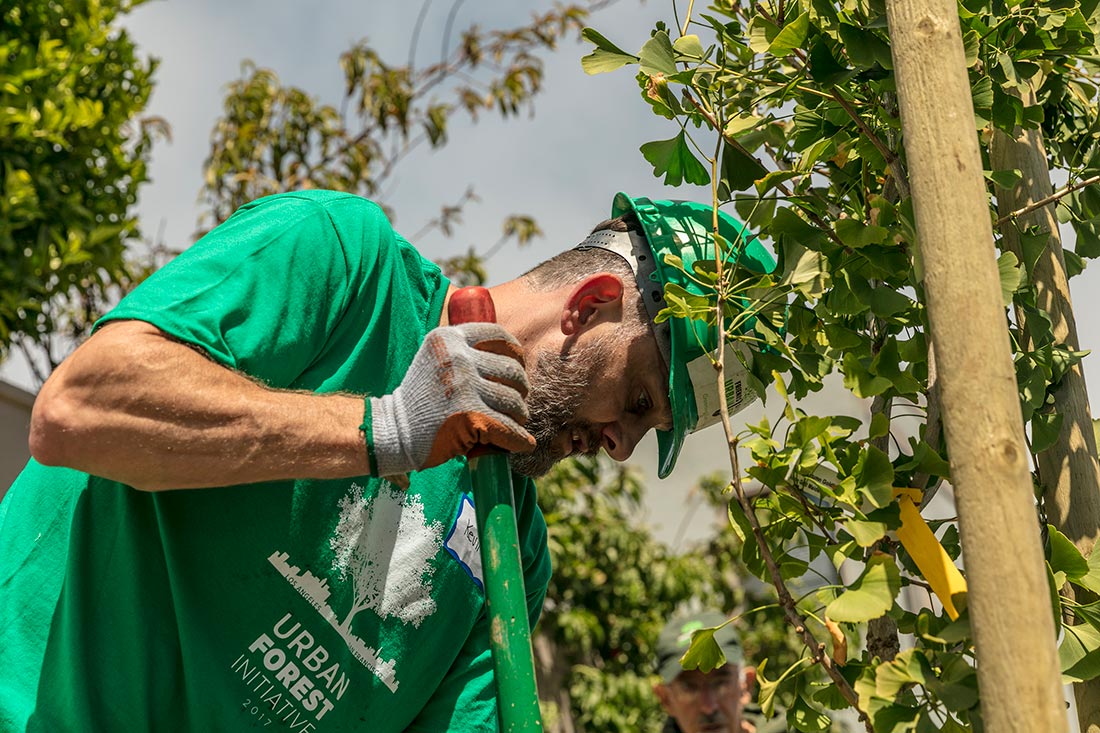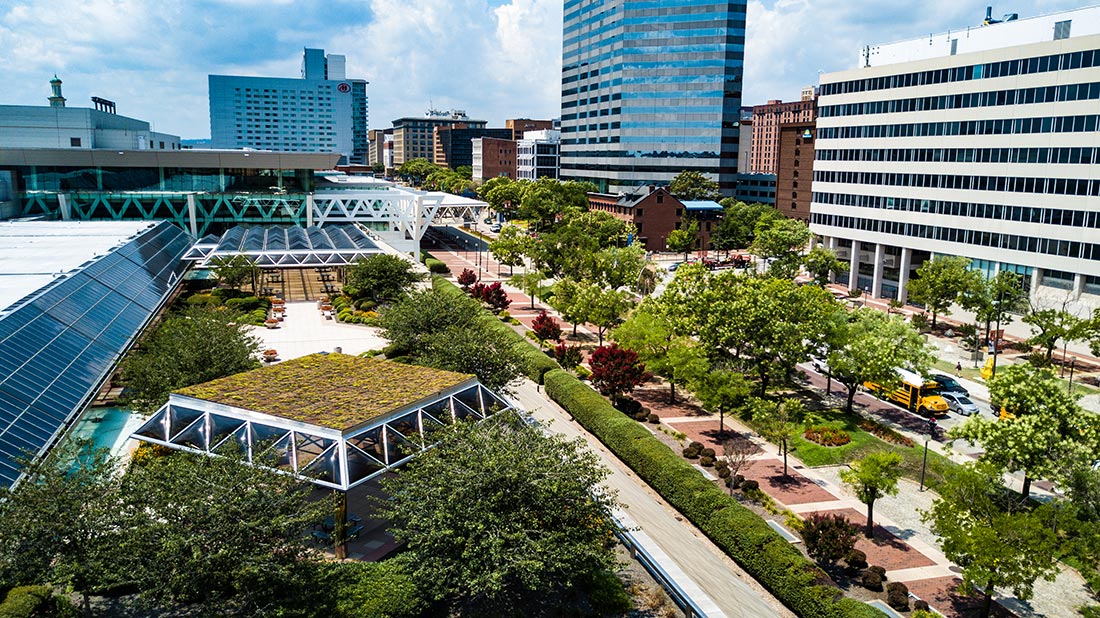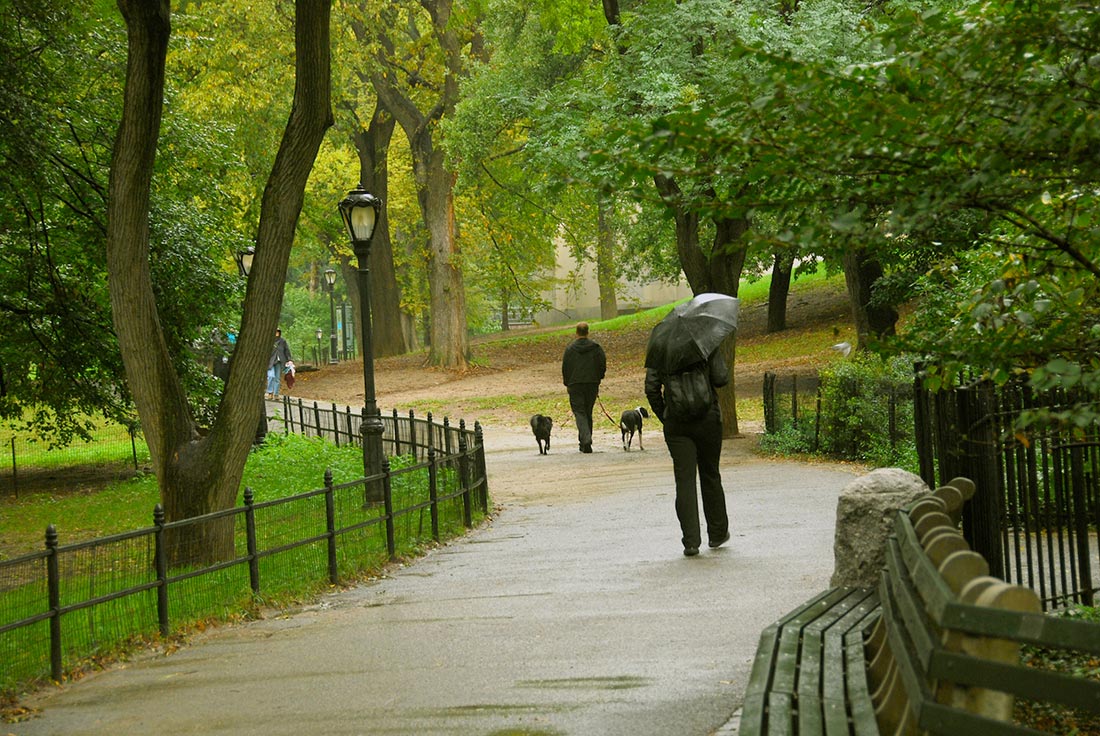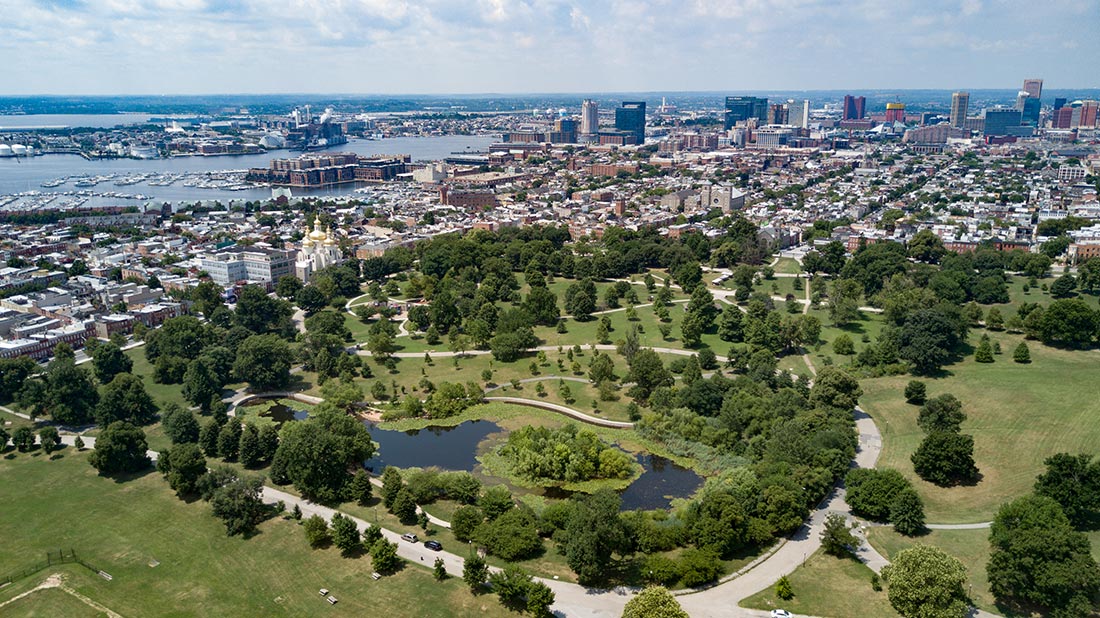A State-of-the-Art Platform to Help City Leaders Harness Urban Forests
By Ian Leahy

AMERICA’S CITIES ARE EXPERIENCING A PERIOD OF REMARKABLE and exhilarating renewal. City governments, community groups, nonprofits like American Forests, universities and many other institutions are all working to help shape vibrant, equitable cities for the future.
Technology can help ensure that urban forests are included as a central part of every city’s future plans and investments. Despite best efforts, too often organizations trying to lead urban forestry are disconnected from other urban leaders and lack the right tools and information to plan, fund and execute a vision for urban tree canopy.
The new Vibrant Cities Lab, created by American Forests in partnership with the U.S. Forest Service (USFS), the National Association of Regional Councils (NARC) and numerous cohorts, uses computer technology to integrate and empower urban forest leaders. The Vibrant Cities Lab will for the first time ever provide a single online hub for all of the best tools and technical information for urban forests, including online computer mapping using tree canopy cover.
But first, a little background information about the seemingly oxymoronic field of urban forestry. (Forest + city is not intuitive for everyone!) Because trees weave throughout our cityscapes, urban forestry by definition connects such diverse fields as planning, landscape architecture, transportation, public works, public health, public safety and city management, touching each but without being embodied by any.

What sets urban forestry apart from simple tree planting is that it addresses tree canopy in the built environment on a systemic level. Effective urban forestry must stretch across property lines and jurisdictional boundaries, addressing sometimes wildly divergent policies right across the street of one another. Yet at its best, we know from cutting-edge research that a healthy tree canopy has the potential to benefit nearly every aspect of daily life, from academic performance and crime rates to water quality and economic development.
This diverse, complicated community leading urban forestry is why we created the Vibrant Cities Lab as a single, unified online resource that delivers the research and best practices of urban forestry to the disciplines that impact tree canopy the most. Lauren Marshall, of the USFS’s Urban Technology and Science Delivery Team, sees this site as critical to fulfilling their mission.
“A key role for the U.S. Forest Service in urban and community forestry is providing communities of all sizes with the information and tools they need to sustain their forests and the benefits they provide,” says Marshall. “The Vibrant Cities Lab makes those resources easily accessible in a curated way.”
We paid particular attention to design and user experience — with a commitment to avoid creating another green forestry website. Vibrant Cities Lab is designed to stand out and to be welcoming to those who don’t see the world through the prism of trees, providing city managers, allied professions, researchers, students and advocates an easy-to-use curated source for everything they need to begin integrating urban forestry into their objectives.

THE MOST UP-TO-DATE RESEARCH
One of the most striking contributions urban forestry has made in recent decades is an ever evolving body of research that shows the sometimes predictable, sometimes very surprising, effects of the presence of trees in the places we live on our environment, economy, social interactions and psychological well-being.
However, this research is emerging at such a rate, and from so many different sources, that it is challenging to keep up. Vibrant Cities Lab’s “Make the Case” section draws upon the expertise of leading researchers and experts to create a definitive research summary across 11 areas of impact: human health, economic development, air and water quality, public safety, social equity, transportation, education, city planning, smart cities tech and urban wood reuse.
URBAN FORESTRY STEP-BY-STEP TOOLKIT
Building a comprehensive urban forestry program can be an unwieldy process, from establishing the right data to building strong coalitions and finding funding to sustain the program. The “Make it Happen” section adapts academic and professional analyses, culminating with the “The Sustainable Urban Forest: A Step-by-Step Approach” guide written by Michael Leff, into an easy-to-follow, 17-step process distilled into six phases: assess, prioritize, organize, plan, build and sustain.

SELF-ASSESSMENT AND GOAL SETTING TOOL
To figure out where one’s community is in that process, Vibrant Cities Lab includes a unique self-assessment and goal setting tool for city managers and advocates to determine their community’s strengths and weaknesses. This information is for their own private use unless they choose to make it public. The scale for each question can range from “-1”, because lacking some components is detrimental to the tree canopy, to “5” for truly pacesetting performance in a category.
For example, not having a public tree inventory loses one point. Having a sample inventory done that’s not being actively used earns one point. Using that inventory to guide decision-making is given two points. An optimally performing municipality would generate four points for having an up-to-date, comprehensive tree inventory of its entire urban forest with information tailored to users and supported by mapping in a municipal GIS system.
The same process is used for other factors, such as high-resolution tree canopy assessments, species health, age and distribution, how well various agencies, diverse communities and utilities engage in the planning and management process, and whether there are markets for urban wood waste.
Particularly when budgets are limited, this tool can be used to prioritize the most important urban forestry investments a community can make to meet its own objectives.

CURATED RESOURCE LIBRARY
We are often asked by our local partners across the country about best practices that are being implemented elsewhere. To date, that information has been scattered widely. Vibrant Cities Lab’s Resource Library curates some of the best examples from across the country of local ordinances, urban forestry management plans, best practices for maintaining green spaces and communication products that can be directly accessed, all in an easily searched database with links to the original content.
DIVERSE CASE STUDIES
Tying the whole site together are case studies that ground this information in the real world. Examples span a wide geographic and size spectrum, from small towns to midsize and major cities. Like the rest of the site, these stories will be updated quarterly to maintain fresh perspectives. For example, the site features the city of Reading, Pennsylvania’s complete streets policy that was ranked best in the nation and Oregon’s legislature to create markets for urban lumber in Clackamas County. There is also a section on how smart cities technology is being used to improve urban forest management in places like Chicago and Philadelphia.

REACHING KEY AUDIENCES
Cognizant of many well-intentioned microsites strewn throughout the desolate outreaches of the internet, urban forestry partners will spend the next year and beyond promoting this site at conferences, webinars and local events, writing guest articles and blog posts to reach targeted professions, and hosting promotions. But, the most important impact may begin in our hometown of Washington, D.C., where we are working to link Vibrant Cities Lab into the websites of associations and other organizations that have established audiences in the disciplines urban forestry most impacts.
American Forests is also demonstrating Vibrant Cities Lab’s impact on the ground in cities nationwide through our award-winning Community ReLeaf work, from Baltimore and Detroit to Dallas and Miami. We provide a uniquely comprehensive process to help cities build successful urban forestry programs. Vibrant Cities Lab helps us strategically target our investments from such partners as Bank of America and Alliance Data to maximize long-term impact.
Urban forestry as a discipline has matured to a stage whereby it is ready to integrate into the decision-making processes of the disciplines that impact tree canopy the most. Vibrant Cities Lab is an important online infrastructure to begin doing that on a national scale. Lance Davisson, chair of the National Urban and Community Forestry Advisory Council to the Secretary of the Department of Agriculture, captured this vision perfectly.
“The Vibrant Cities Lab is a valuable resource for all professionals who are charged with planning for and managing the green infrastructure of our nation’s cities and towns,” says Davisson. “The Vibrant Cities Lab brings together a much-needed compendium of information for urban and community forestry, and provides access to technical tools for long-term sustainable management of this critical community resource. This is a great resource for urban and community forest efforts everywhere to reach new scale and effectiveness.”
Ian Leahy writes from Washington, D.C., and is American Forests’ director of urban forest programs.